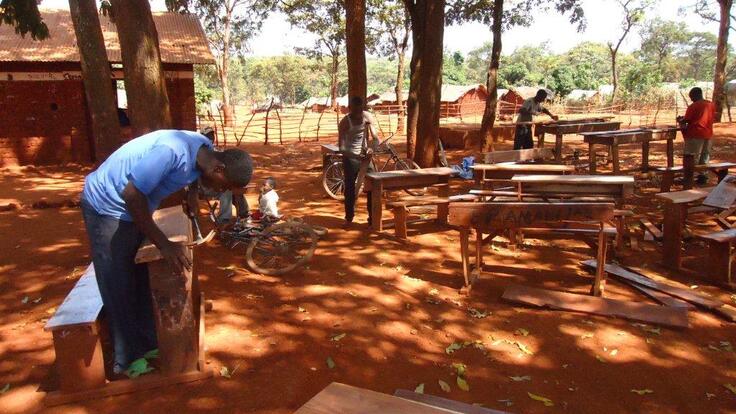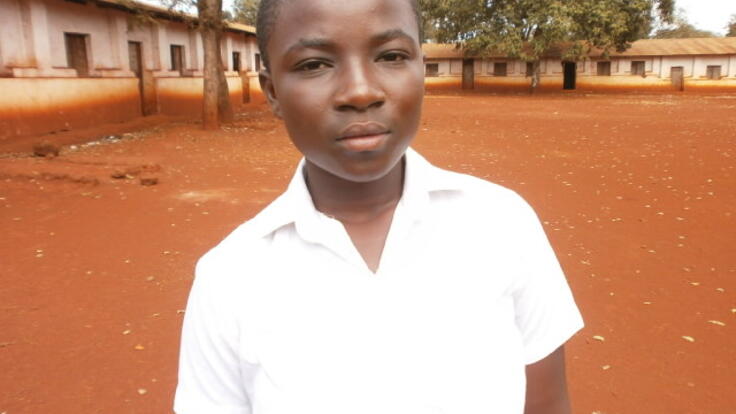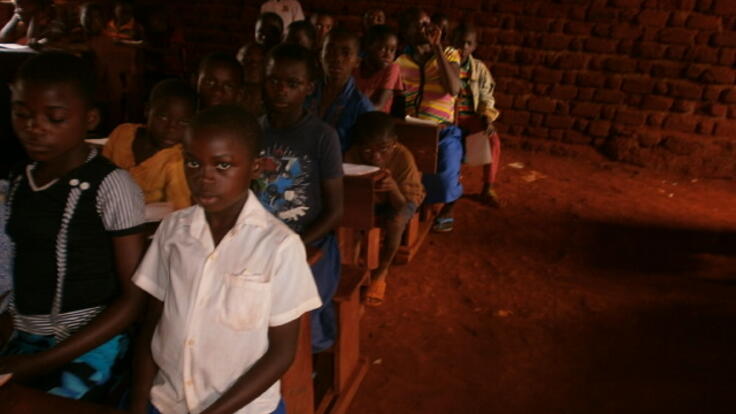Most of the school-age children in Nyarugusu refugee camp in northwestern Tanzania were born here. In the 1990s, their parents had fled violence in neighbouring Rwanda, Burundi and the Democratic Republic of Congo; some never returned home. Over 70,000 are still in need of international protection. The youngest know no other life, and they have little chance of learning about the world beyond Nyarugusu, or even acquiring basic language and math skills.
In recent years, as the infrastructure in Nyarugusu deteriorated, going to school meant bringing your own stool, crowding onto limited benches, or sitting on the floor throughout the lessons. “I am very unhappy about the current classrooms we’re using because some are about to fall down,” says Mmonga Masimango, a student in his final year of secondary school. “It is very dangerous for everyone.”
This year will be different. The International Rescue Committee, in partnership with the United Nations refugee agency (UNHCR), has teamed up with the refugee community to renovate 166 classrooms and build 80 new ones. The collaborative effort will also repair and build school desks and make other improvements.
“As far as I have heard, there will be no classrooms without new desks, so pupils won’t be sitting on the floor anymore,” says Chakubuta Bitangacha, a teacher. “This will provide a more conducive learning environment without any kind of disturbance, like what happens now when pupils are forced to come with their own chairs from home.”
Congolese carpenters, masons and other artisans, who have been honing their skills in the camp’s vocational training institute, are working alongside Tanzanian civil engineers to ensure the buildings can withstand the heavy rains that have torn apart entire blocks of classrooms in recent years.
Meanwhile, the IRC is introducing the refugee education coordination team, parent-teacher associations and school inspectors to its flagship education method, “Healing Classrooms.” The first trainings, designed to improve the classroom environment by focussing on student and teacher well being and the learning needs of displaced children, began in February.
“Healing Classrooms” was inspired by a series of focus groups led by the IRC’s Child Protection and Women’s Protection and Empowerment teams. The discussions had elicited stories of teachers struggling to maintain order in overcrowded classrooms, a situation that often led to harsh punishments for unruly children. “Healing Classrooms” provides techniques to help students feel included and accountable, establish routines to instill a sense of safety, and use meaningful classroom tasks to break gender stereotypes.


